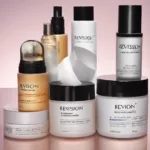31 December 2023
Are Biodegradable Beauty Products Truly Eco-Friendly?
In recent years, the beauty industry has witnessed a surge in eco-conscious practices, with brands striving to reduce their environmental footprint. One notable area of focus is packaging, as companies seek alternatives to single-use plastics. Biodegradable options, such as cotton sheet masks, have gained popularity due to their perceived eco-friendliness. However, experts caution that the disposal process plays a crucial role in determining the true environmental impact. This article explores the complexities surrounding biodegradable beauty products and the importance of considering the entire lifecycle of packaging materials.
1: The Biodegradability Paradox: Landfill Limitations
While the concept of biodegradability seems promising, the reality is more nuanced. According to Jen Novakovich, an environmentalist and cosmetic chemist, the fate of biodegradable waste depends on the disposal method. Landfills, the final destination for most discarded products, may not provide the necessary conditions for biodegradation. As a result, even biodegradable materials can persist in these environments for extended periods, undermining their purported eco-friendliness.
2: Beyond Biodegradability: A Holistic Approach
To truly assess the environmental impact of beauty packaging, it is essential to consider the entire lifecycle of the materials used. While single-use sheet masks might be biodegradable, their short lifespan and limited use make them less sustainable than products packaged in tubs or tubes. These containers, when made from recyclable or refillable materials, offer a more environmentally conscious option. By extending the product’s lifespan and reducing waste, they contribute to a more sustainable beauty industry.
3: The Role of Consumer Behavior
While brands play a significant role in adopting sustainable packaging practices, consumer behavior is equally crucial. Educating consumers about proper disposal methods and encouraging recycling can make a substantial difference. Additionally, consumers can choose products with minimal packaging or opt for refillable options, actively contributing to reducing waste.
4: The Need for Industry Collaboration
To address the environmental impact of beauty packaging comprehensively, industry collaboration is paramount. Stakeholders, including brands, manufacturers, and policymakers, must work together to develop standardized guidelines for sustainable packaging. This collaboration can drive innovation, promote best practices, and ensure that the beauty industry moves towards a more environmentally responsible future.
5: Innovations in Sustainable Packaging
The beauty industry has seen remarkable advancements in sustainable packaging solutions. From plant-based plastics to innovative refill systems, brands are actively seeking alternatives to traditional packaging. By investing in research and development, companies can reduce their reliance on non-recyclable materials and pave the way for a more sustainable future.
Conclusion:
While biodegradable beauty products offer a promising step towards sustainability, their true environmental impact depends on various factors. Disposal methods, product lifespan, and consumer behavior all play crucial roles in determining the overall sustainability of beauty packaging. As the industry continues to evolve, collaboration and innovation will be key in driving positive change. By considering the entire lifecycle of packaging materials and making conscious choices, both brands and consumers can contribute to a more eco-friendly beauty industry.



